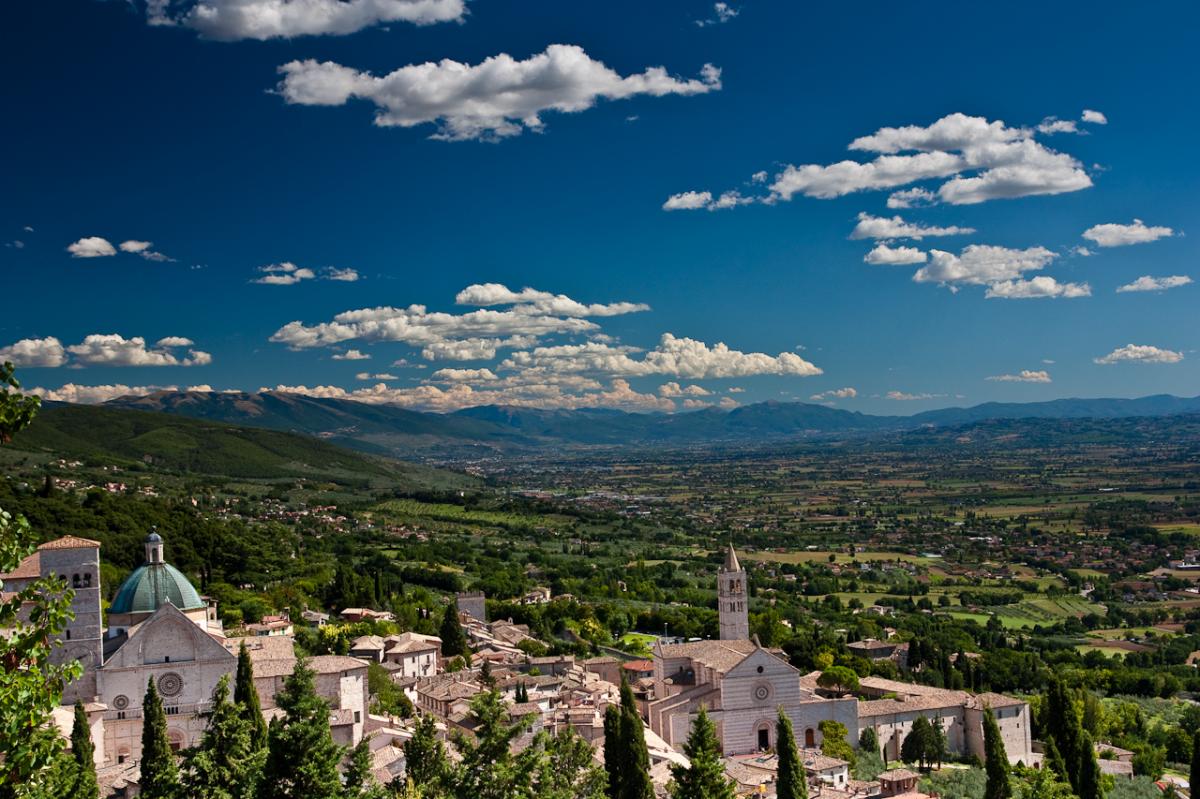




 9 April 2014
9 April 2014
 Caterina Pomini
Caterina Pomini
 8692
8692
Founded by the Umbrians around 1000 BC and conquered by the Etruscans about five centuries later, by the Battle of Sentinum the town passed into the hands of the Romans and became part of the Duchy of Spoleto in the early Middle Ages. In the 12th century, Assisi turned into an independent Ghibelline commune and was involved in a series of battles with Guelph Perugia until annexation to the Papal States. In the first half of the 19th century, the remains of St. Francis and St. Clare were recovered and the town became one of the most important pilgrimage destinations in Italy and the world.
An overview of Assisi's main sights
The first stone of the Basilica di S. Francesco d'Assisi was laid by Pope Gregory IX himself on 17 July 1228, two years after Francesco's death; completed in 1253, it comprises the upper church, the lower church and a crypt, where the remains of the loving friar were interred in 1818. It is Assisi's most famous landmark and one of the greatest repositories of Early Renaissance fresco painting; although heavily damaged by the terrible earthquakes of 1997, it was thoroughly restored and reopened to the public.
The 13th century Basilica di Santa Chiara is home to the remains of Santa Chiara d'Assisi (St. Clare) – friend, follower and protégé of St. Francis. It has a beautiful facade with a wagon wheel rose window, massive lateral buttresses and a simple Gothic interior.
Much venerated as the place where Francesco died on 3 October 1226, the Basilica di Santa Maria degli Angeli was built between 1569 and 1679 and enshrines the Porziuncola – the Romanesque little church where St. Francis understood his vocation.
Also known as the Duomo di San Rufino, Assisi's cathedral was built in the 12th century and is believed to be the site of the ancient Roman forum. St. Francis, St. Clare and many other Franciscan original followers were baptized in this church.
The Convent of San Damiano stands just outside the Assisi walls and is known as the place where St. Francis received his miraculous calling (1205) and St. Clare died (1253). Less crowded than the other Franciscan sites, it is an important stop on the pilgrimage to Assisi.
The Carceri Hermitage is perhaps the most fascinating place of Assisi and rises on the green slopes of Monte Subasio; formerly a small oratory, it is well worth visiting for its Medieval architecture but makes also a good departure point for magic walks in the woods.
Every stone of Assisi emanates a bright aura, it is a very special place where you can really perceive a strong energy all around you; besides being the undisputed home of St. Francis and St. Clare, it is also rich in Roman ruins and dominated by a massive medieval fortress.
If you are visiting Florence and you feel like going on a group tour to Assisi, contact www.ciaoflorence.it for details.
THIS SECTION
IS UNDER CONSTRUCTION